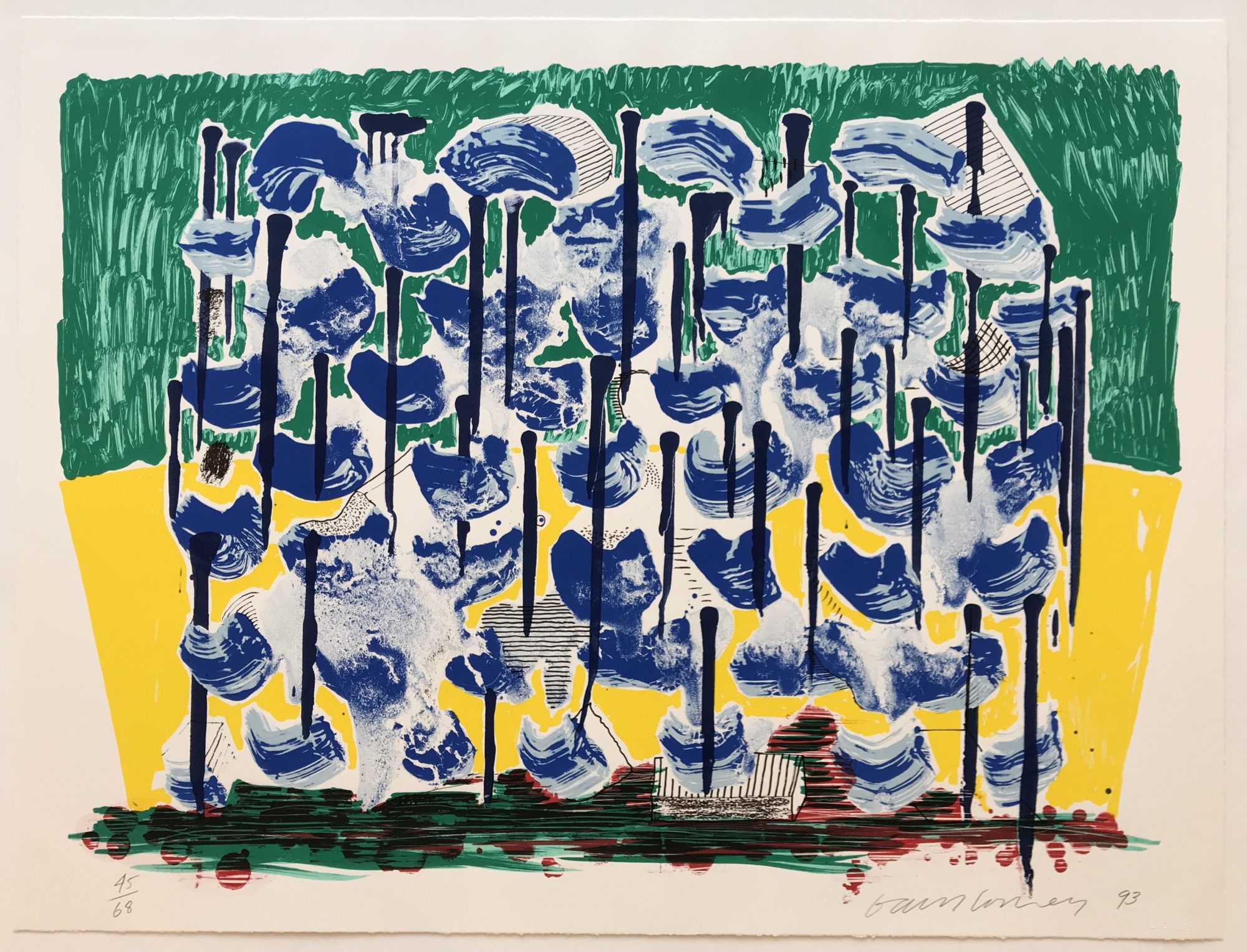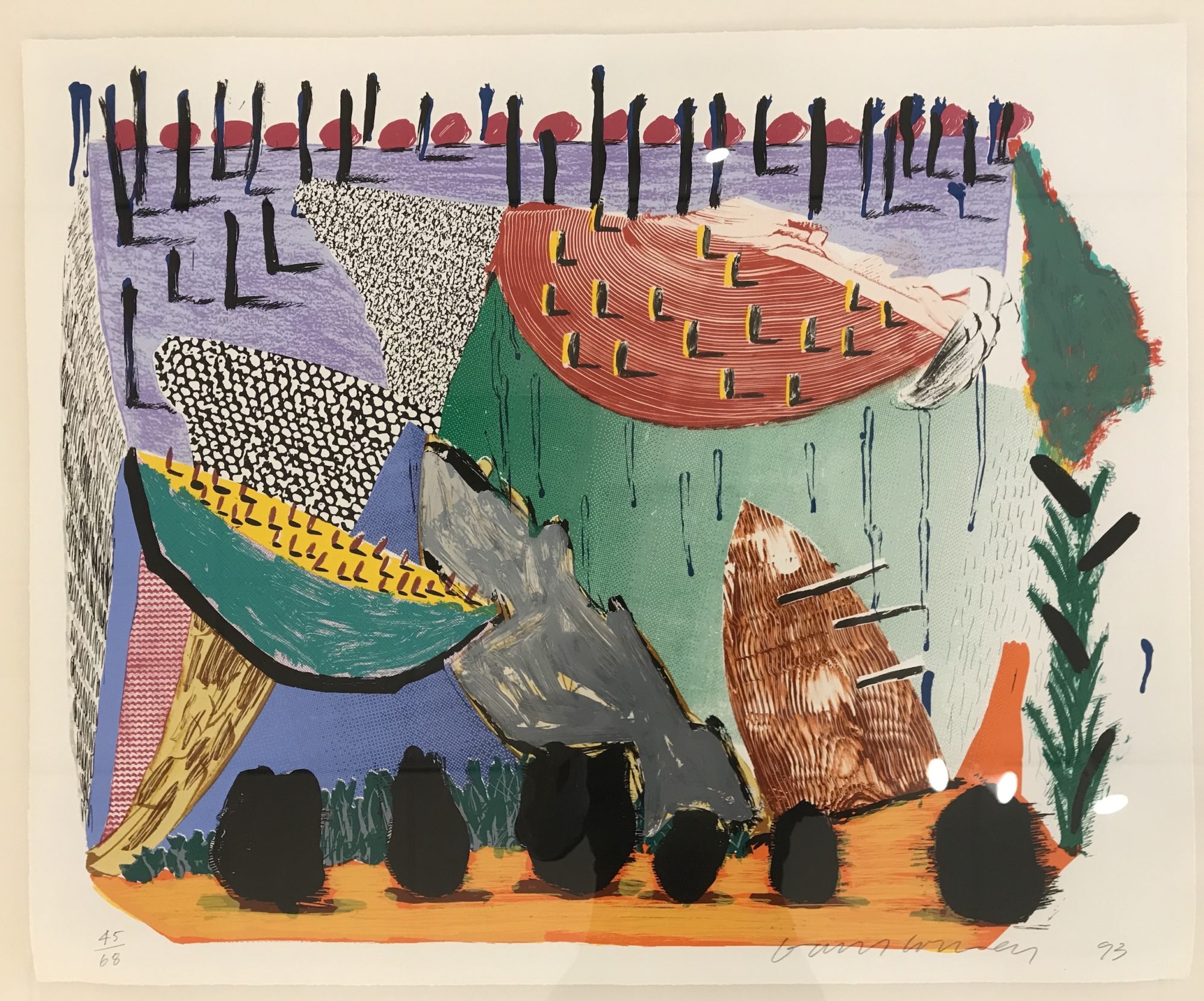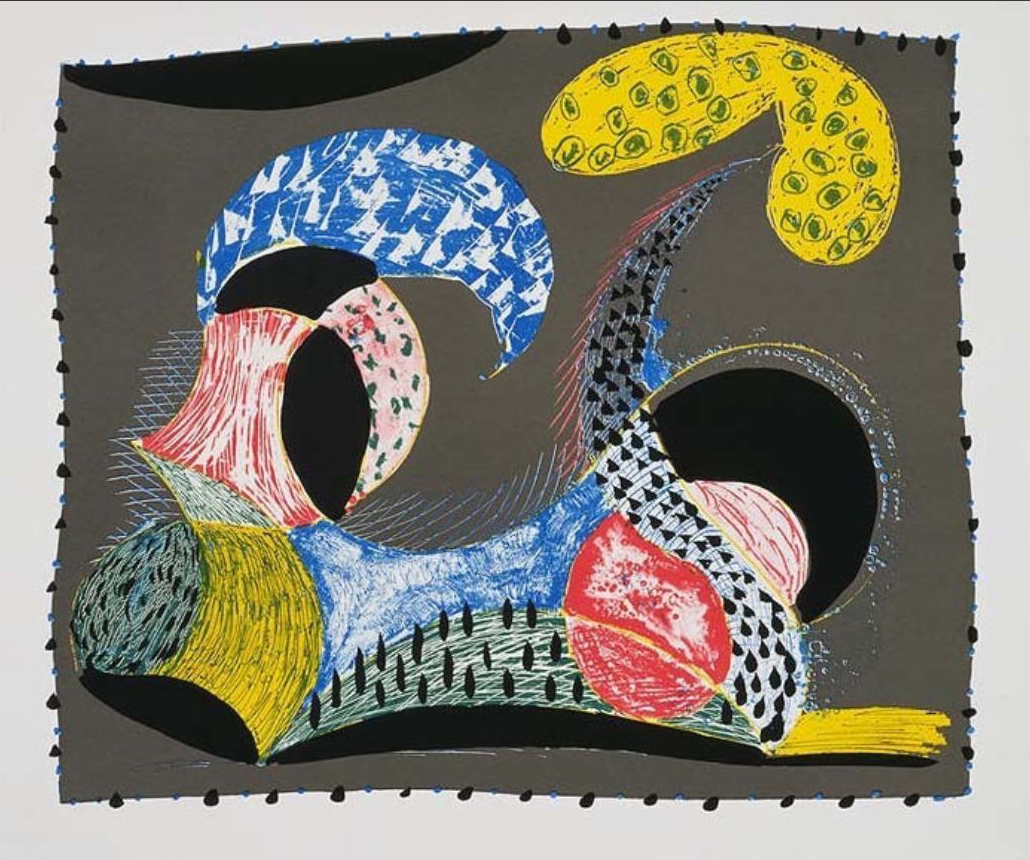David Hockney – Slow Forest
David Hockney, Slow Forest is from a series entitled Some New Prints. This print is an original screenprint and lithograph on Arches 88 paper. Signed and dated in the lower right, numbered in the lower left. Published by Gemini G.E.L., Los Angeles, with their blindstamp.
Hockney’s experimentation with photography and other reproductive technologies would go on to significantly influence his work in other media, including paintings and prints. In the 1980s he began producing works that would start as drawings, which he would then print and further manipulate. Occasionally including photocopies of actual objects, he dubbed these works “Home Made Prints.” Hockney’s work with reproductive technologies, which necessitate a simplification of volumes, would also eventually lead him to return to the loosely abstract aesthetic which had characterized his earlier work. This shift is evident in lithographs such as Walking Past Two Chairs (from Moving Focus) and An Image of Gregory, both of which explore the dynamic between objective observation and representation drawn from memory and impressions, much in the same way that Cubism does. “Memory must be part of vision, because everything is now. The past is now,” Hockney once said. “Because each of us has a different memory, this proves to me that objective vision cannot be. When you look at this, you remember that you’ve seen things like it before. Your memory comes in and forms part of it, contradicting the objectivity of vision.”
| Title | Slow Forest |
|---|---|
| Medium | Lithograph, Screenprint |
| Year | 1993 |
| Edition | 68 |
| Signature | Signed, dated, numbered |
| Size | 25 x 33 (in) 64 x 84 (cm) |
| Price | SOLD |
Description
David Hockney, Slow Forest is from a series entitled Some New Prints. This print is an original screenprint and lithograph on Arches 88 paper. Signed and dated in the lower right, numbered in the lower left. Published by Gemini G.E.L., Los Angeles, with their blindstamp.
Hockney’s experimentation with photography and other reproductive technologies would go on to significantly influence his work in other media, including paintings and prints. In the 1980s he began producing works that would start as drawings, which he would then print and further manipulate. Occasionally including photocopies of actual objects, he dubbed these works “Home Made Prints.” Hockney’s work with reproductive technologies, which necessitate a simplification of volumes, would also eventually lead him to return to the loosely abstract aesthetic which had characterized his earlier work. This shift is evident in lithographs such as Walking Past Two Chairs (from Moving Focus) and An Image of Gregory, both of which explore the dynamic between objective observation and representation drawn from memory and impressions, much in the same way that Cubism does. “Memory must be part of vision, because everything is now. The past is now,” Hockney once said. “Because each of us has a different memory, this proves to me that objective vision cannot be. When you look at this, you remember that you’ve seen things like it before. Your memory comes in and forms part of it, contradicting the objectivity of vision.”
In 1959 David Hockney went to the Royal College of Art in London to continue his art studies: “Immediately after I started at the Royal College I realized that there were two groups of students there: a traditional group, who carried on as they had done in art school, doing still life, life painting and figure compositions; and then what I thought of as the more adventurous, lively students, the brightest ones, who were involved in the art of their time. They were doing big Abstract Expressionist paintings on hardboard.”
David Hockney duly tried abstraction, but found it too sterile. During this time Hockney was in a phase of rapid self-discovery on both artistic and personal levels. David Hockney was coming to terms with his own sexuality while at the same time searching for an artistic style. Since figure-painting seemed ‘anti-modern’ David Hockney began by including words in his art as a way of humanizing them, but these were soon joined by figures painted in a deliberately rough and rudimentary style which owed a great deal to artist Jean Dubuffet. In 1961, while still a student at the Royal College of Art, David Hockney was featured in the exhibition Young Contemporaries—alongside artist Peter Blake—that announced the arrival of British Pop Art. This show marked the public emergence of a new Pop movement in Britain, with Hockney considered one of its leaders.
Additional information
| Title | Slow Forest |
|---|---|
| Medium | Lithograph, Screenprint |
| Year | 1993 |
| Edition | 68 |
| Signature | Signed, dated, numbered |
| Size | 25 x 33 (in) 64 x 84 (cm) |
| Price | SOLD |




